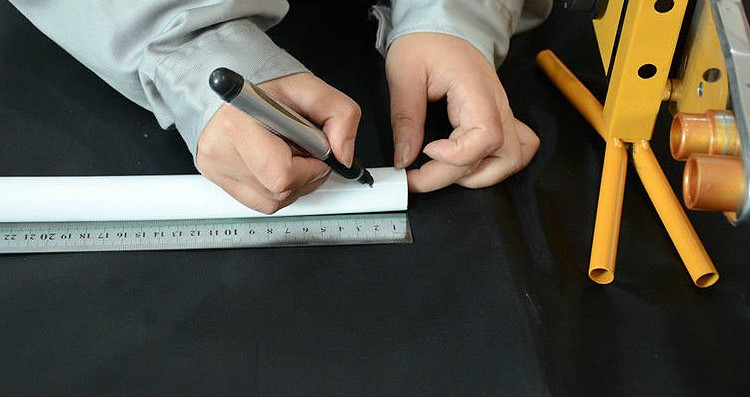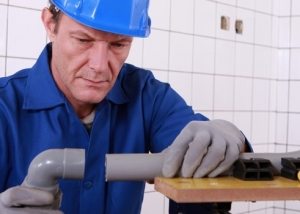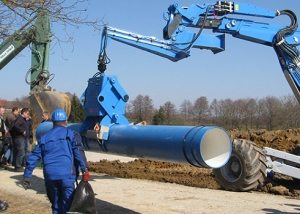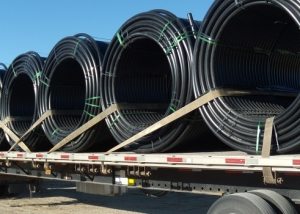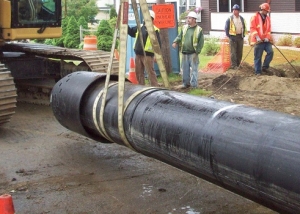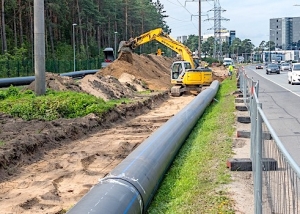Old metal pipelines, which have long lost their suitability and relevance, need urgent replacement. An ideal option for wiring a “new generation” water supply system is lightweight metal-plastic or plastic pipes, which have a lot of advantages. If it was decided to install water pipes on their own, without resorting to the help of plumbers, it makes sense to thoroughly study this issue in order to avoid typical mistakes in design and construction.
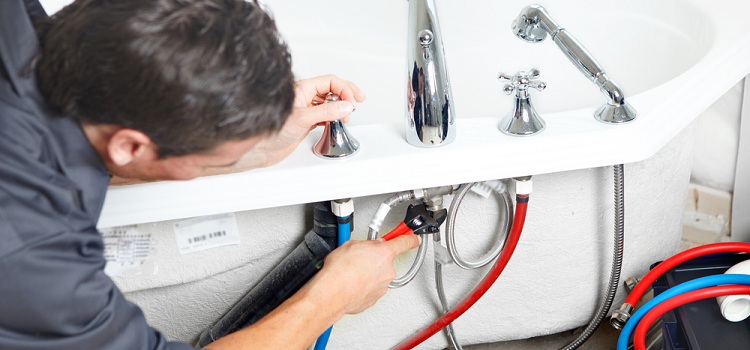
Replacing water and sewage pipes in the bathroom is a simple process, but requires certain knowledge
Content
Are plumbing pipes required?
Definitely yes. Metal pipelines, which in most cases have been preserved since the commissioning of multi-storey buildings, have long ceased to comply with sanitary standards and requirements. Old pipelines are in disrepair and practically cannot be repaired.
The fact is that in addition to pure piped water, a fairly large amount of impurities that constantly settle on the walls daily passes through the communications, due to which the clearance becomes much smaller, and also leads to corrosion. As a result, particles of oxidized metal also get into the water in the mains, and the composition of the water is becoming less and less suitable for public use.
What can I say that when the owner of an apartment wants to make at least a cosmetic repair of the bathroom, the question of replacing pipes with plastic suggests itself. Whatever layer of paint is applied to old rust-covered communications, such a pipeline will still spoil the aesthetic impression of the new design of the bathroom or toilet.
A positive moment in such a seemingly large-scale event - replacing pipes in the bathroom and toilet does not require the use of special equipment: you can use your own basic tools, they are in almost every house, and plastic pipes and fittings for them can be bought in any household or construction store.
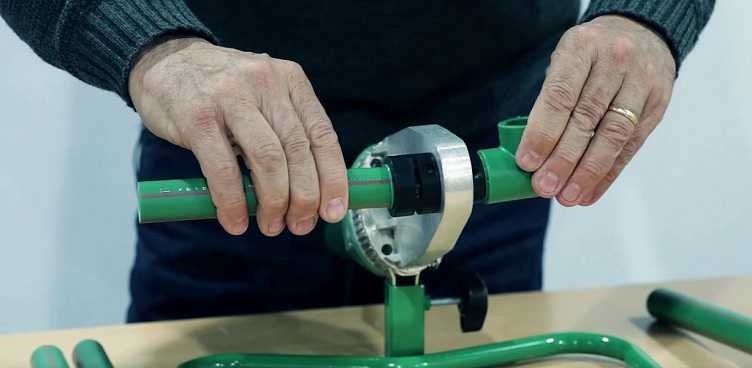
Working with modern plumbing materials does not require special skills, even a home master can cope with installation
What tools are needed to replace the pipes in the toilet or bathroom?
Replacing plumbing pipes requires the following tools:
- A grinder with a disk designed for working with metal is useful for the comfortable dismantling of old cast-iron pipelines and their mounts. Of course, dismantling can also be done with more “aggressive” tools like scrap, but a grinder will minimize the time spent on removing old plumbing.
- A manual screwdriver for cutting or any other cutting tool is needed for threading a metal pipe.
- Drill or punch - will be needed if there is a need to drill holes for fasteners for the pipeline or when channeling through the wall.
- Materials for connection: an electric soldering iron with several nozzles, fittings or glue (depending on the chosen connection method).
- Useful things: a pipe cutter or hacksaw, a construction pencil or marker, tape measure, screwdrivers, screws, a hammer and a chisel.
Also, when replacing old risers and pipes with new ones, it is necessary to have adapters from metal to plastic structures. The length of pipe products, as well as the number of various fittings (tees, splitters, clamps, connectors and adapters), is determined in accordance with a pre-prepared wiring plan.
When creating a plan diagram of a future water supply system (the very first and crucial step!) The following points are taken into account:
- Type of bathroom - if the bathroom is separate, it makes sense to simultaneously replace communications in two rooms. One way or another, replacing pipes in one room, you will soon enough feel the need to install new ones in another.
- The place where plumbing and household appliances are located. For example, the toilet should be closest to the drain.
- The nature of the water supply - this moment affects the material from which the new pipes are made. For cold water and sewage, polypropylene or PVC is suitable, for hot water - metal-plastic or reinforced polypropylene.
- The number of turns and bends of the system - it is advisable to avoid too sharp turns of 90 degrees, this negatively affects the passability of the system.
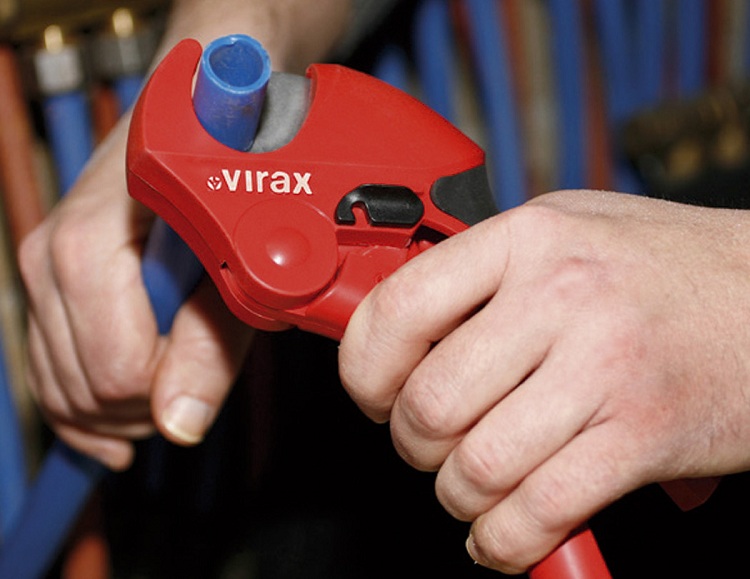
An important point is pipe cutting, the cut quality depends on the sharpness of the cutting tool - an uneven edge with burrs will adversely affect the tightness of the connection
Do-it-yourself pipe replacement with plastic ones: procedure
After the preparation and approval of the plan, you can begin dismantling. Before this, you should definitely make sure that the supply of hot and cold water in the communications near the risers has been stopped. If the replacement of the risers is also included in the work plan, then the water is disconnected in the basement of the house. In this case, the following conditions must be met:
- obtaining permission to carry out work from a house organization engaged in the maintenance of communications;
- coordination of time for work with neighbors;
- After replacing the pipes, the water supply should be renewed within a clearly defined time frame.
It is advisable that the installation of riser pipes is made from apartments located above and below yours. Therefore, it is important to coordinate the time of work with the other residents of the house. In this case, everyone will be in a winning position: the one who started the repair can safely continue the work on finishing the bathroom with the confidence that nothing will leak unexpectedly, and it will be much easier for the neighbors to replace the pipes in the future.
A cut of the old water supply or sewage system is carried out using a metal grinder and the other tools listed above. When disassembling, it is necessary to protect the face with a special mask so as not to get injured if a shard of pipe gets in.
Sewerage runoff is carried out using taps and connecting elements. At this stage, a welding machine for soldering pipes is useful. After soldering the pipes, they are connected to the bathtub mixer.
Important! When working in the combined bathroom, the replacement of metal pipes with plastic pipes is carried out simultaneously with the installation of an additional valve that blocks the water supply to the drain tank. This is convenient if you need to replace the hose.
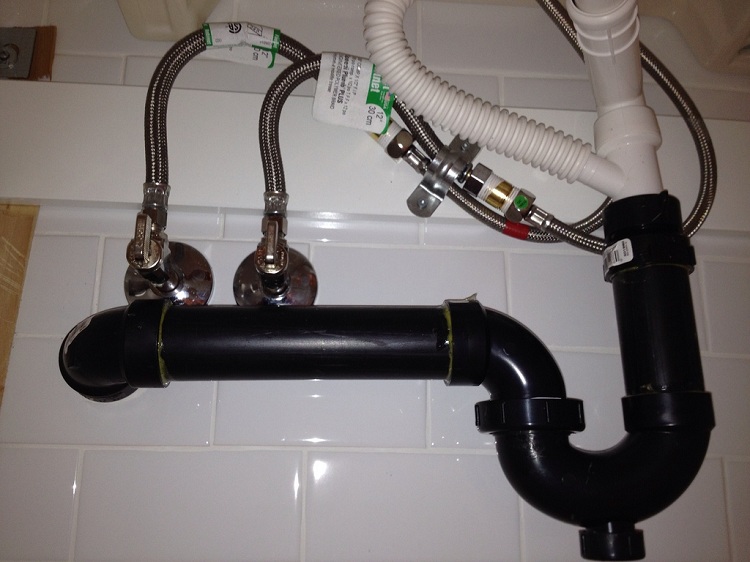
When replacing pipes, it is necessary to install shut-off valves on the connection to each plumbing fixture, this will simplify the maintenance of the system in the future
Installation of the mixer is the final stage of work. After the system is installed and tested for safety, communications can be hidden by a box or covered with a layer of thermal insulation.
Replacing pipes in the bathroom and toilet: basic recommendations
A few tips in which replacing pipes in the toilet and bathroom will be safe and of high quality:
- When cutting products, the length of the fittings must be taken into account. If the distance between the fittings is 35 cm, it is necessary to cut off a section 38 cm long, since the length of each fitting is approximately 1.5 cm.
- Soldering of plastic pipes should be carried out as quickly as possible in order to prevent polymer remelting.
- When replacing the sewage system, all installation work must begin with the toilet. All connections to the toilet are thoroughly lubricated with a sealing solution. Pipe fasteners are carefully carried out at each joint, and fractures are not allowed.
- For a hot water supply system, it is better to choose metal-plastic or polypropylene pipes reinforced with fiberglass or aluminum foil. The latter option is even successfully used in heating systems for apartments and houses. Conventional polypropylene pipes can soften and sag under the influence of hot water.
- For each plumbing fixture, a certain slope angle must be observed, detailed data can be seen in the SNiP tables.
As work is completed, all joints should be checked for leaks. To check, just pour a couple of liters of water into the sink, toilet or bath. As for water communications, it is enough to simply open taps with water and watch the joints for 10-15 minutes.
How is a fan pipe replaced?
A sewer pipe is one of the elements of a sewer system. It is a continuation of the general sewer riser and is removed from the premises (usually through the roof of the house) in order to eliminate unpleasant odors. Fan sites can be located both horizontally and vertically, and sometimes diagonally. The presence of such a branch from the riser is a mandatory requirement, especially for apartment buildings, since without a fan pipe it will be almost impossible to get rid of the unpleasant odor inherent in sewers.
Replacing fan pipes is necessary in several cases:
- after major repairs of the sewage system and / or water supply;
- pipe clogging began to occur regularly;
- Unpleasant odors began to penetrate into the living room.
Important! It should be borne in mind that the appearance of an unpleasant smell in an apartment may have other reasons. As an option - the lack of a tight connection in some parts of the sewer system, a malfunction of the water seal in the siphons or a failure of the cuff on the toilet.
To replace the fan pipe, it is desirable to completely dismantle the sewer riser, if possible. Such a volume of work is difficult enough to do by yourself, preferably if the plumber does it. If this is not possible, then dismantle individual sections of the riser. This will significantly reduce the amount of labor.
The replacement of the pipe should start from the lowest point, in the case of a private house it will be the foundation. In order to connect a new pipe section to an old pipe section, the rubber o-rings are lubricated with building silicone, petroleum jelly or ordinary soap. When switching from a cast iron product to plastic, as always, special rubber adapters are used.
It is desirable to fix the fan pipe using metal fasteners - clamps. In this case, it is better not to use plastic fittings, they are less reliable than metal ones. In addition, metal shaped elements have a screw structure and allow you to adjust the fixation. The fan pipe is attached to the supporting wall. Fasteners should be placed as often as possible, and not just at two points - at the beginning and at the end.
The fan pipe is connected to the riser using tees and bends.
The question of how to change the sewer or water pipes in the bathroom yourself deserves a detailed study.Carefully following these recommendations, even a novice plumber can cope with this task.
